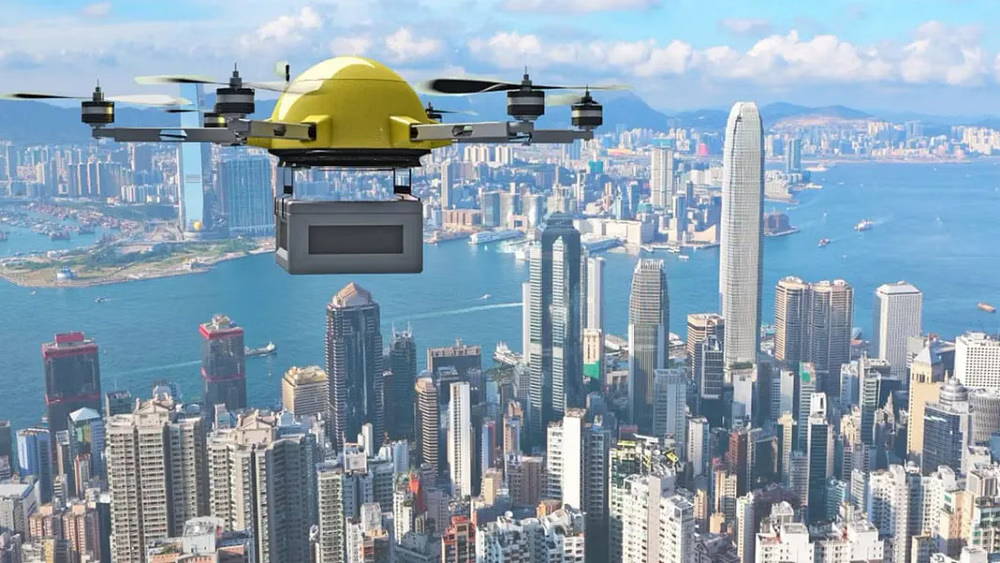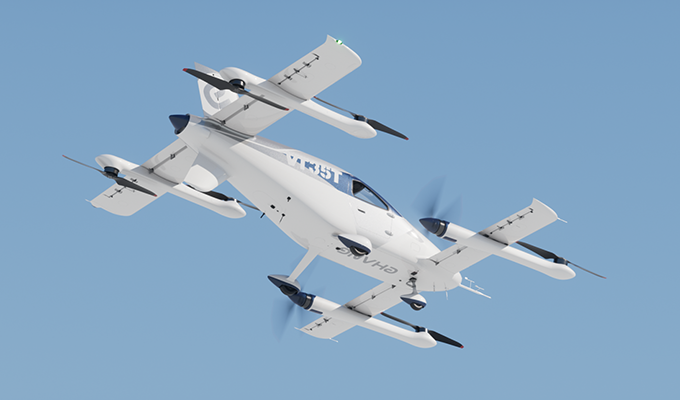
Hong Kong Opens Skies to Higher-Payload Drones: Drives Low Altitude Economy Growth
Hong Kong has taken a major step toward establishing itself as a leading hub for the low-altitude economy (LAE) by introducing new regulations that allow drones to carry significantly heavier payloads. The Small Unmanned Aircraft (Amendment) Order 2025, which took effect on July 18, 2025, extends the regulatory framework to cover drones weighing up to 150 kilograms, a six-fold increase from the previous 25-kilogram limit.
The regulatory expansion represents Hong Kong's most significant aviation policy reform in years. The new Category C aircraft classification covers drones weighing between 25 and 150 kilograms, requiring operators to obtain prior approval from the Civil Aviation Department (CAD) and maintain appropriate insurance coverage. For drones weighing 25-75 kilograms, operators must secure HK$15 million in insurance, while heavier aircraft require HK$20 million coverage.
Deputy Financial Secretary Michael Wong highlighted the strategic importance of these changes: "Amendments to local laws and regulations to promote the development of the low-altitude economy are in the works. One of the key points of the amended laws would be to allow higher payloads, which would result in more such drones being allowed to operate".
The legislation also includes provisions for cross-boundary operations and establishes data retention requirements to support regulatory enforcement. Complementing these changes, the Air Navigation (Hong Kong) Order 1995 (Amendment) Order 2025 empowers the Chief Executive to permit trials of unconventional aircraft under specified conditions.
Sandbox Program Delivers Tangible Results
Hong Kong's low-altitude economy Regulatory Sandbox has emerged as a critical testing ground for advanced drone operations. Launched in March 2025, the program approved 38 projects from 72 applications, covering emergency rescue, logistics delivery, infrastructure inspection, and surveillance applications.
 The Chief Executive, Mr. John LEE, attends the Low-altitude Economy Regulatory Sandbox - Launch Event
The Chief Executive, Mr. John LEE, attends the Low-altitude Economy Regulatory Sandbox - Launch Event
Several high-profile pilots demonstrate the program's practical impact:
- CLP Power successfully conducted beyond-visual-line-of-sight (BVLOS) operations in Sai Wan, Sai Kung, for overhead line inspections, achieving over four-fold efficiency improvements compared to traditional ground patrols
- SF Express showcased long-range delivery capabilities with drones flying up to 40 kilometers between Hong Kong Island and outlying islands
- China Mobile Hong Kong partnered with Prince Margaret Hospital to develop medical supply air-drop systems
- Fire Services Department deployed drones for wildfire monitoring and rescue operations in difficult terrain
The sandbox has attracted participation from major companies including Meituan, PCCW, the University of Hong Kong, and the Hospital Authority.
Policy Framework Aligns with National Strategy
Hong Kong's low-altitude economy development directly supports China's broader strategic objectives. The mainland's low-altitude economy reached RMB 670 billion (approximately US$93 billion) in 2024 and is projected to exceed RMB 3.5 trillion (US$486 billion) by 2035. China established a dedicated Low-Altitude Economy Development Division under the National Development and Reform Commission in December 2024, signaling the industry's national priority status.
Chief Executive John Lee positioned Hong Kong's LAE initiative within this national context: "The LAE is one of our nation's strategic emerging industries, as well as an example in exploring new quality productive forces. It is set to strengthen city management and business efficiency, and create a whole new experience of smart living for the public".
Technical Infrastructure and Cross-Border Integration
Hong Kong's LAE development emphasizes both local capabilities and Greater Bay Area integration. The Working Group on Developing Low-altitude Economy, chaired by Deputy Financial Secretary Michael Wong, has identified four key work streams: regulatory sandbox implementation, legislative enhancements, infrastructure planning, and cross-boundary corridor development with mainland China.
The government plans infrastructure investments covering take-off/landing points, communication networks, air route systems, and low-altitude surveillance platforms. These developments support Hong Kong's strategic positioning as a bridge between international markets and China's rapidly expanding LAE industry.
Global Context and Regional Leadership
Hong Kong's regulatory progress occurs within a broader Asia-Pacific push toward LAE standardization. Twenty-four Asia-Pacific states, led by Singapore's Civil Aviation Authority, are developing joint reference materials for electric vertical take-off and landing (eVTOL) aircraft and drone operations. These guidelines, published in July 2025, address certification, operational regulations, and cross-jurisdictional cooperation.
The global eVTOL market was valued at approximately US$4.47 billion in 2024 and could reach US$22.35 billion by 2030. Morgan Stanley projects the overall global LAE market could reach US$9 trillion within 25 years, highlighting the enormous economic potential Hong Kong is positioning to capture.
Economic Impact and Future Outlook
Hong Kong's low-altitude economy initiatives are generating measurable economic activity. The Civil Aviation Department reported that drone performance applications increased from 17 in 2023 to 41 in 2024, while over 50 government departments now utilize drones for various operations. The eSUA platform has registered more than 36,000 remote pilots and 43,000 drones.
Transport and Logistics Secretary Mable Chan emphasized the broader economic significance: "We would like to increase the existing weight limit, to facilitate heavier and more sophisticated drones to be flying. We would also introduce a special provision enabling the Director-General of Civil Aviation to allow trials of even more sophisticated and heavier low-altitude equipment".
The regulatory reforms position Hong Kong to compete effectively with other regional hubs while maintaining its role as an international aviation center. As the three-runway system at Hong Kong International Airport increases capacity to 102 flights per hour, the integration of low-altitude operations creates new opportunities for comprehensive airspace management.
Looking Ahead: Next Phase Development
Hong Kong's low-altitude economy strategy extends beyond current regulatory changes. Lawmakers are planning second-phase sandbox applications to accommodate growing industry interest, while infrastructure development in the Northern Metropolis and other strategic locations will support expanded operations.
The combination of regulatory flexibility, strategic location, and strong institutional frameworks positions Hong Kong as a critical player in Asia's emerging low-altitude economy. As global demand for drone logistics, urban air mobility, and advanced aerial services continues growing, Hong Kong's proactive regulatory approach and higher payload allowances provide the foundation for sustained industry leadership in this rapidly evolving market.



